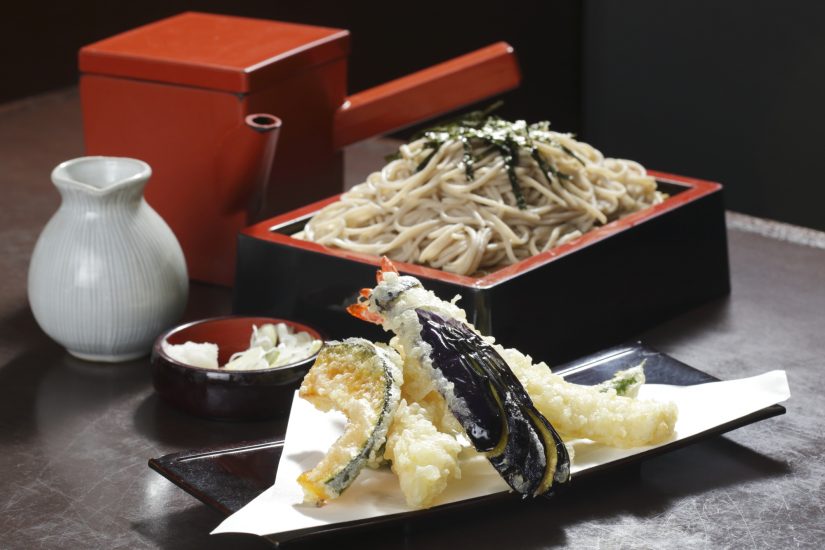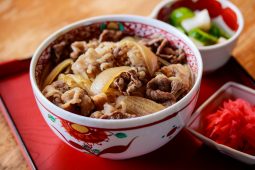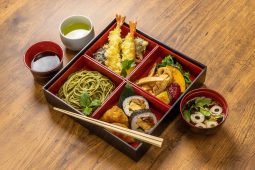In part 2 of this miniseries, we’ll continue to explore Japan’s options for a cheap, fast and good meal. This time we’ll look at what might be less familiar to someone visiting for the first time. We’ll pick up with the list where we left off before, with food from supermarkets and convenience stores, before moving on to other things.
Convenience stores also offer buns (of the chinese variety, meat buns, bean paste ones and a few others), and in the colder parts of the year, oden, a kind of 24-hour stew turned buffet dish when you pick out any of the pieces you want to take home. Between this and my article on drinks, you should be able to assemble what you want quite easily. Definitely try the oden if you’re here at the right time of the year, but I’ll stand by all of this; I don’t personally love the convenience store sandwiches, but everything else is a big example of the food being much better than it should be.
- Bento is technically any boxed meal. When you buy it as a product, it means an assortment of dishes arranged around a large amount of white rice. I won’t go into too much detail on this just because they’re diverse enough that it’s just about pointless, but if you want a portable square meal (I swear this wasn’t meant to be a pun when I wrote it) on a small budget and no time,this is probably your best bet. They’re a bit scarcer at supermarkets, because the assumption there is that you’re buying to eat at home while bento is eaten out of the house, but convenience stores can cover for you, and the hotto-motto chain earns a place as almost the only food chain I will actually recommend. Bento is a particularly Japanese experience that stays quite approachable at the same time, and it’s one you really should have while you’re here.
- Soba and Udon. The former are thin, sometimes greyish buckwheat noodles, the latter thick, white wheat-based noodles. Both can be had hot (in a bowl of soup), or cold, piled on a dish, usually with a few accessories to the dish – some fried food or an egg, for example – to keep it interesting, and a dip or two if it’s cold. Personally, I recommend the soba, but both are good choices. These are another one that scales well; you can find it in higher-end restaurants, sure, but it’s also one of the biggest local fast food options, eclipsed only by gyudon and ramen. It’s definitely something you sit down and eat, so it’s not quite as fast, but you can find it at most highway stops or train stations on a small budget, and you rarely have to wait more than ten minutes to get your meal. It’s very filling, and I’m not actually sure I’ve had bad soba or udon in my entire life. It starts out good, though my experience is that the best of it comes from tiny stores in the middle of the mountain with a lone nonagenarian owner, which definitely has some accessibility options (the further soba is from civilisation, the better it gets, I don’t know why this is true). I put it this far down the list because this and the accompaniment of tenpura that it usually comes with has intimidated a few guests into thinking it’s ‘too Japanese’ before. Better safe than sorry.
- Sushi. Granted, you have to sit down for it (you could get supermarket sushi and eat it from the box while walking/driving, but you’d be losing out), and it eventually adds up to be somewhere between cheap fast food and an ordinary restaurant in cost, if you eat as much as I do. Still, the conveyor belt kind – look for anything calling itself kaiten-zushi, or 回転寿司 – caters to both orders, and picking anything you like off the belt, which is about as quick as it gets. Each dish is cheap, and the pattern on the plate gives away the price when it’s not all the same price anyway, which can get around the language barrier nicely. If you don’t have a problem with raw fish (and to the most common question I hear, yes, it’s perfectly safe and they know what they’re doing), it’s something you should get around to while in Japan anyway to see what the real thing is like, and a decent addition to this list as well.
With all that in hand, you should be set to eat cheaply and quickly on the go in Japan, no matter what you’re in the mood for, and be safe in the knowledge that you’re getting a square meal out of it. Enjoy!








